

In 2000, Linkin Park revolutionized the music industry with their classic album, Hybrid Theory. Combining elements of rock, metal, rap, and hip-hop, they created a unique and epic sound. From the opening track "Papercut," fans from all genres were immersed in a realm of music that had never been heard before. Chester Bennington's vocals and Mike Shinoda's rapping created a perfect combination over heavy riffs and grooves from Brad Delson. The turntable effects from Joe Hahn added a unique touch that captured the imagination and pushed the limits of time. The album went on to become a classic, even becoming the only album in history with screaming to go Diamond. Tracks like "One Step Closer," "By Myself and With You" continue to impress with their aggressive and intense sound, while "Crawling" and "In The End" serve as emotional ballads that resonate across generations.
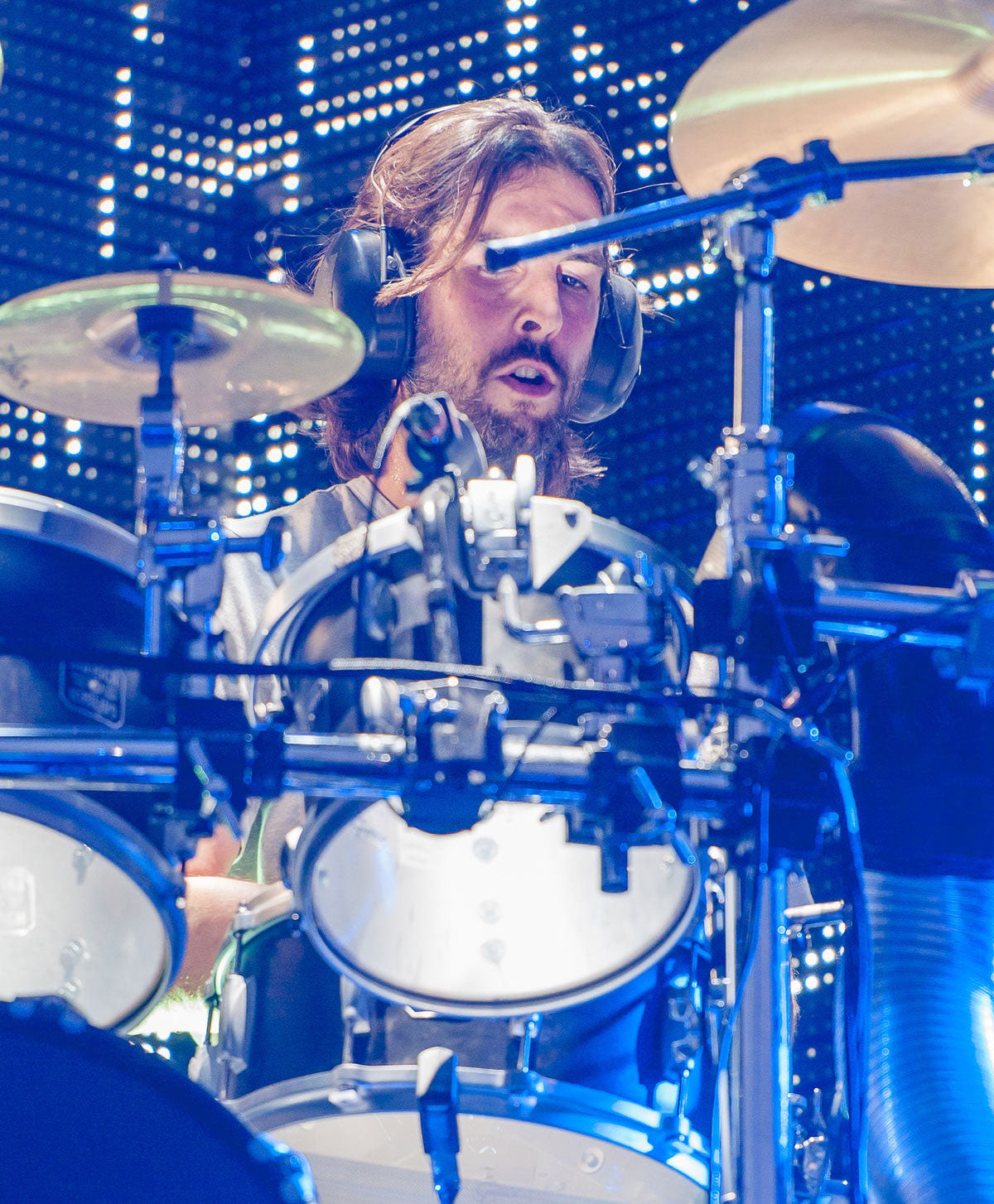
Rob Bourdon performing at the 2014 Rock im Park Music Festival.
They say you have your whole life to make your first album, but only a few months to create your second. Following a successful debut adds a lot of pressure and expectation for repeat success. Duplicating a highly influential crossover milestone like Hybrid Theory is nearly impossible. After two years on the road and playing 170 shows, Linkin Park had very little time off before returning to the studio to create their follow-up album, "Meteora."
Linkin Park's sophomore effort, "Meteora", is a force to be reckoned with. Packed with intense tracks such as "Faint" and "Lying From You", as well as stadium-shaking anthems like "Breaking the Habit" and "From the Inside", the album strikes a powerful fusion of hip-hop and nu-metal that propelled Linkin Park to new levels of popularity. The album's blend of powerful guitar riffs, impassioned vocals, tight rhythms, slick production, and creative elements remains fresh and powerful even after 20 years. Fans and music enthusiasts alike are left wondering; what secret weapons did these 'Rock and Roll Road warriors' bring into the studio to create such an epic album?
Studio Notes
The drums for "Meteora" were recorded in the live room with isolation to prevent bleedover. All parts and players were tracked separately. Thanks to his diligent preparation, Bourdon was able to finish his drum tracks quickly and effectively. In fact, the drum tracks were completed before any other instrument, giving bassist Dave Farrell ample space to lay down his bass tracks.
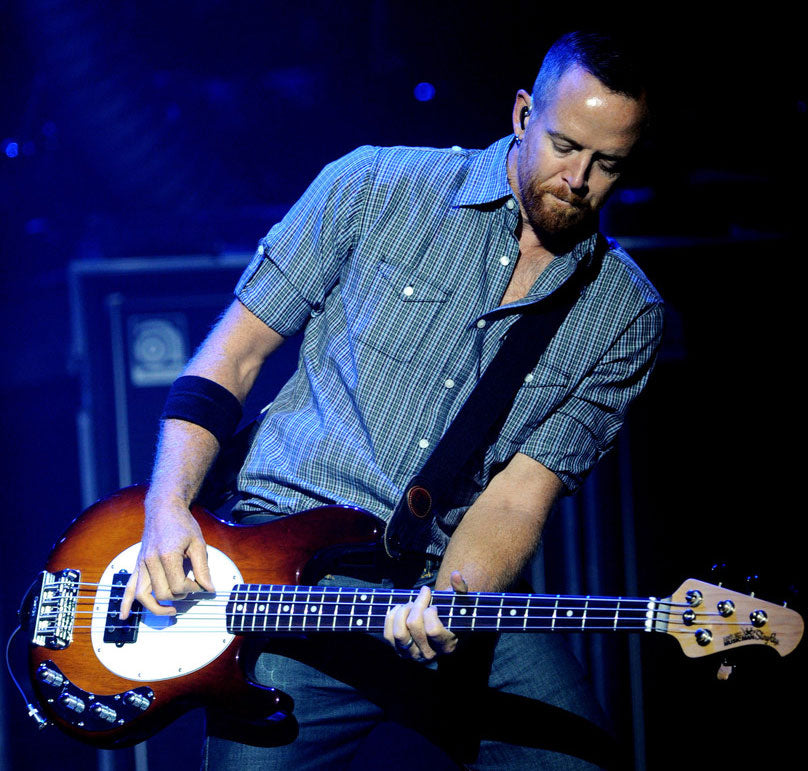
Dave Farrell at the Mayan Theatre, Los Angeles, California, in a charity event for Music For Relief and Save The Children of Japan, August 31, 2011.
The gear and performance behind Meteora:
When it comes to Linkin Park's unique blend of red-hot, "edge of losing control" metal and cool, digital hip-hop, a chameleon-like style is essential. There's no room for a one-trick-pony drummer on the Linkin Park drum throne. Fortunately, founding member Rob Bourdon makes the nearly impossible look and sound effortless. Playing alongside a simple "click track" can be challenging enough, but Bourdon's job goes beyond that, delivering an impassioned performance while starting and stopping loops, triggering samples, and maintaining computerized timekeeping that never wavers. This requires more than just a great drummer - it demands discipline and endurance on a whole new level. Bourdon reportedly prepared for the recording of "Meteora" with daily practice behind the kit for over eight hours per day, every day. Finding another drummer like Bourdon would be a daunting task for Linkin Park.
Bourdon is known for his love of Gretsch U.S.A and vintage-style (70's era) Ludwig snare shells. For the acoustic part of his Meteora Acoustic/Digital hybrid setup, Bourdon used a Gretsch USA custom 5-piece shell pack (22" bass drum, 18" & 16" floor toms, 12" and 10" rack toms) along with a 14x6.5 Chrome over Brass Gretsch Snare drum. He relied on a DW 9000/DW 9002 series kicker, Gibraltar rack system, and stands. For cymbals, Bourdon has stuck by his Zildjian A Customs since recording "Meteora," which included an 18" Crash, 10" splash, 19" Projection crash, 21" Projection Ryde, and 12" China. The electronic part of his setup featured a set of Pintech pads and a Roland SPD pad set. Additionally, Bourdon used Roland triggers on the snare and bass drum to enhance the electric side of his kit. All the pads and triggers were connected through a Mackie power amp, making them audible to the band during live performances. To top it all off, Bourdon is known for playing in a pair of Puma racing shoes for extra sensitivity with his kick drum and high hat pedals. Although Alto Music can't supply the Puma shoes, Foot Locker may be able to help.
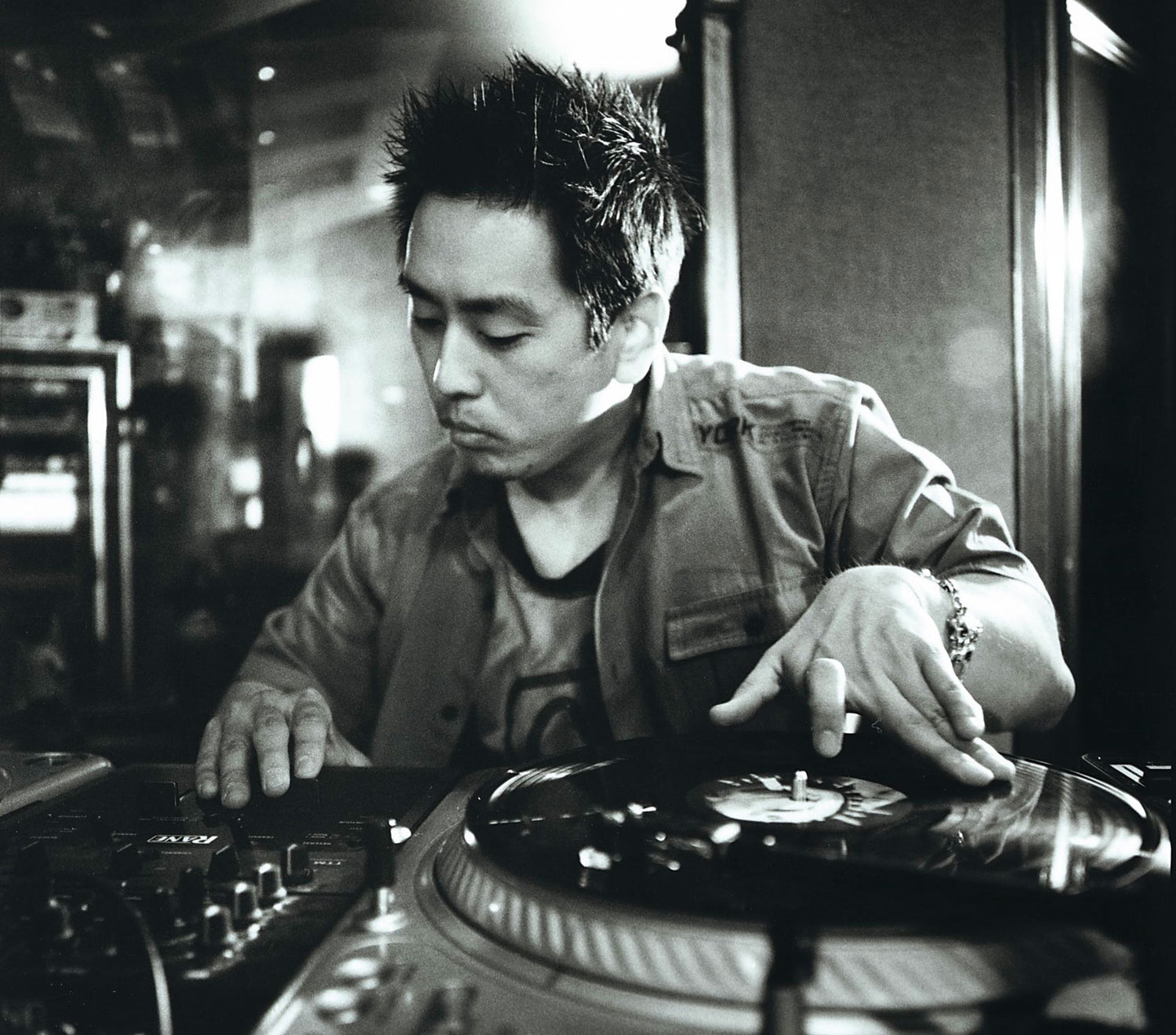
A photograph of Joe Hahn captured during the recording of Meteora.
Bass amps used: Farrell utilized a pair of all-tube 300-watt Ampeg SVT-CL heads that were run through matching Ampeg 810E cabinets. These monster-sized bass rigs were set up and turned up in the live room. Though this may seem like overkill to some, the all-tube Ampeg SVT heads are designed to carry the low end all the way to the back of an outdoor festival the size of Woodstock or larger without needing a mic. The speaker cabs were isolated and baffled, but still loud enough to force Farrell to track his parts in the safety of the control room. When captured and mixed to the right level, the sound maintained its huge sonic footprint and natural growl, thanks in part to the natural power tube distortion that added organic growl without any fuzziness or loss of definition.
Bass guitars used: Farrell's bass guitar setup for Meteora included his favorite Musicman Stingray 4 and 5 string basses, as well as some tracking done with producer Don Gilmour’s 5-String Pearl White Sadowski J style Bass that can be seen on the “ Making of Meteora” album insert.
Studio Notes
The Ernie Ball Musicman Stingray EQ control plate pots were taped in place to protect the exact settings that Don and Dave liked best. The 5-string basses used standard tuning, while the 4-string Musicman was tuned to drop C# or Eb to match Brad's guitar tuning.
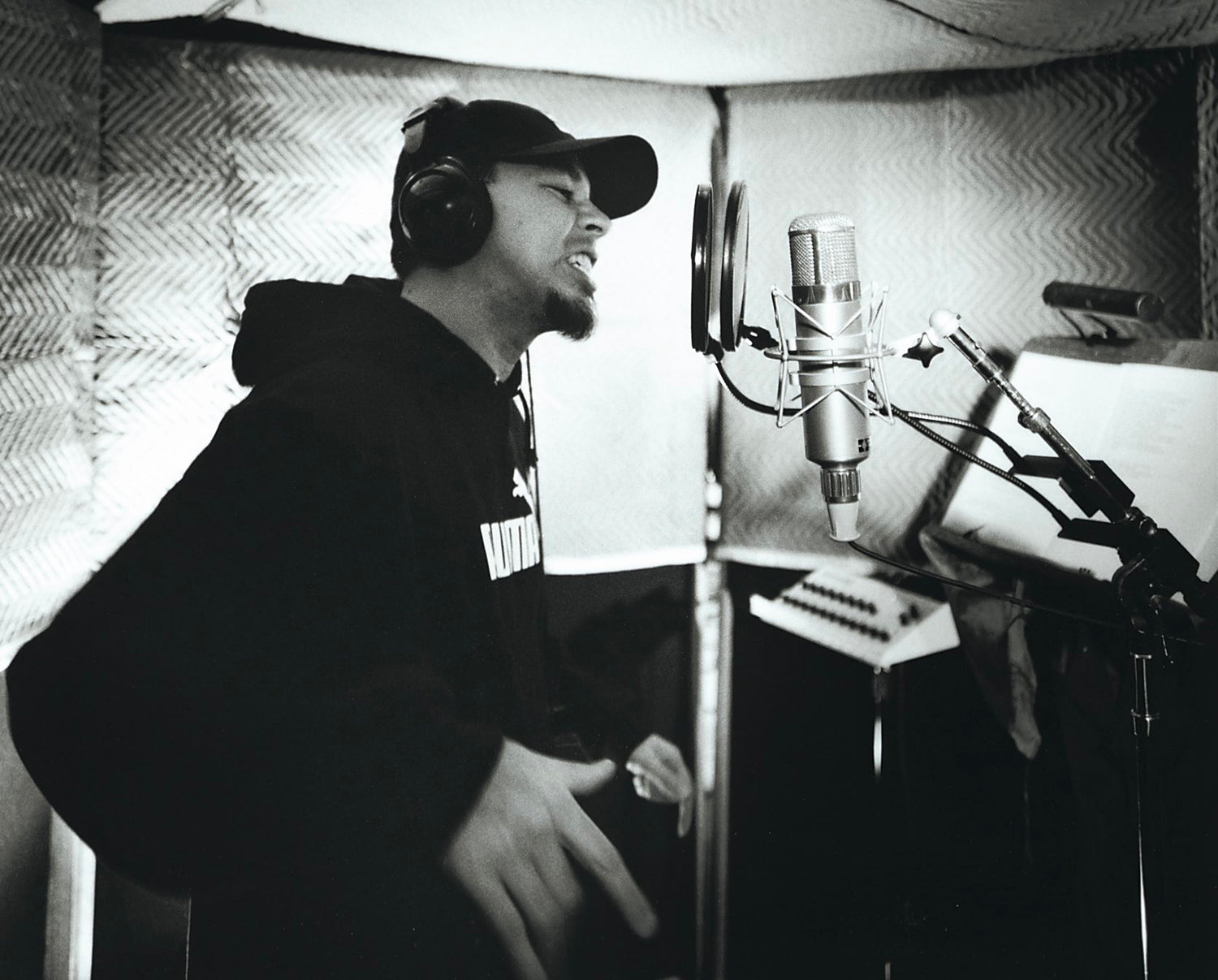
Photograph of Mike Shinoda taken during the recording of Meteora.
Despite considering Linkin Park as his "side job," Joe Hahn contributed to the band's success, with their first album alone selling 11 million copies. (Nice side gig Mr. Hahn)
Hahn's talent goes beyond being a DJ/producer, as he also has a hand in creating the band's logos, artwork, and photography, as well as directing many of their music videos.
Hahn's creative process is inspired by originality, using samples solely from original sources, rather than presets or commonly used tracks and sounds. In other words, when Hahn is behind the turntables, you won't hear anything familiar like "When the Levee Breaks" or any generic orchestra sounds.
Synths, samplers, Turntables, FX Hahn used on Meteora: His equipment included samplers and drum machines such as the Akai MPC2000 and MPC200XL, as well as workstations like the Korg Triton 88 and Rackmount version. He also used Vestex and CDJ turntables, a Rane DJ mixer, a Roland JV-1080 88 synth, and various effects including the Korg Electribe and Boss GT-5.

Photograph of Brad Delson with his PRS Custom 24 Black Cherry.
Although Linkin Park has no official leader, it's safe to say that Mike Shinoda is the backbone of the band. Every song that made it to the Meteora album was captured bit by bit on Shinoda's tour bus recording studio, where he selected every big and small idea. Despite the band members' talent and contributions, Meteora could not have been made without Shinoda's ability to bring it all together.
Shinoda performed the acoustic piano parts, synth tracks, all the rap vocals, and some melodic lead and background vocals.
The NU-Metal guitar tone has a unique sound that is just as distinctive as any other popular style or sound created over the years.
Before criticizing it as unoriginal or negative, consider that the same is true for genres like 80s hair metal, blues-rock, hard rock of the 70s, folk rock, jangle, Britpop, punk, glam, R&B, country, jazz, and anything else you can think of. Some guitarists within an established style stand out, and Delson is one of them.
Although he doesn't deviate too far from the Nu-Metal guitar sound, which typically features dropped tunings and heavy distortion with scooped mids, Delson manages to set himself apart. Listen to Meteora again, and take a look online to see how many young players are still discovering Linkin Park and seeking to emulate Delson's tone.
Delson's secret to success is not just in getting the right sound. He is also one of the best part and riff writers of the Nu-Metal era, serving the song with the perfect parts at the right time. Knowing when to turn up the heat and when to bring it down is a big part of Delson's powerful sound.
Studio Notes
Joe Hahn and Mike Shinoda of Linkin Park rearranged the sound of Brad Delson's acoustic guitar to create the iconic intro and sound effects on the hit song "Somewhere I Belong." Hahn believed that the original track sounded too folk-like, so he and Shinoda sampled, reversed, and replaced the notes in the proper sequence. The end result sounds so good, even Delson loves it!
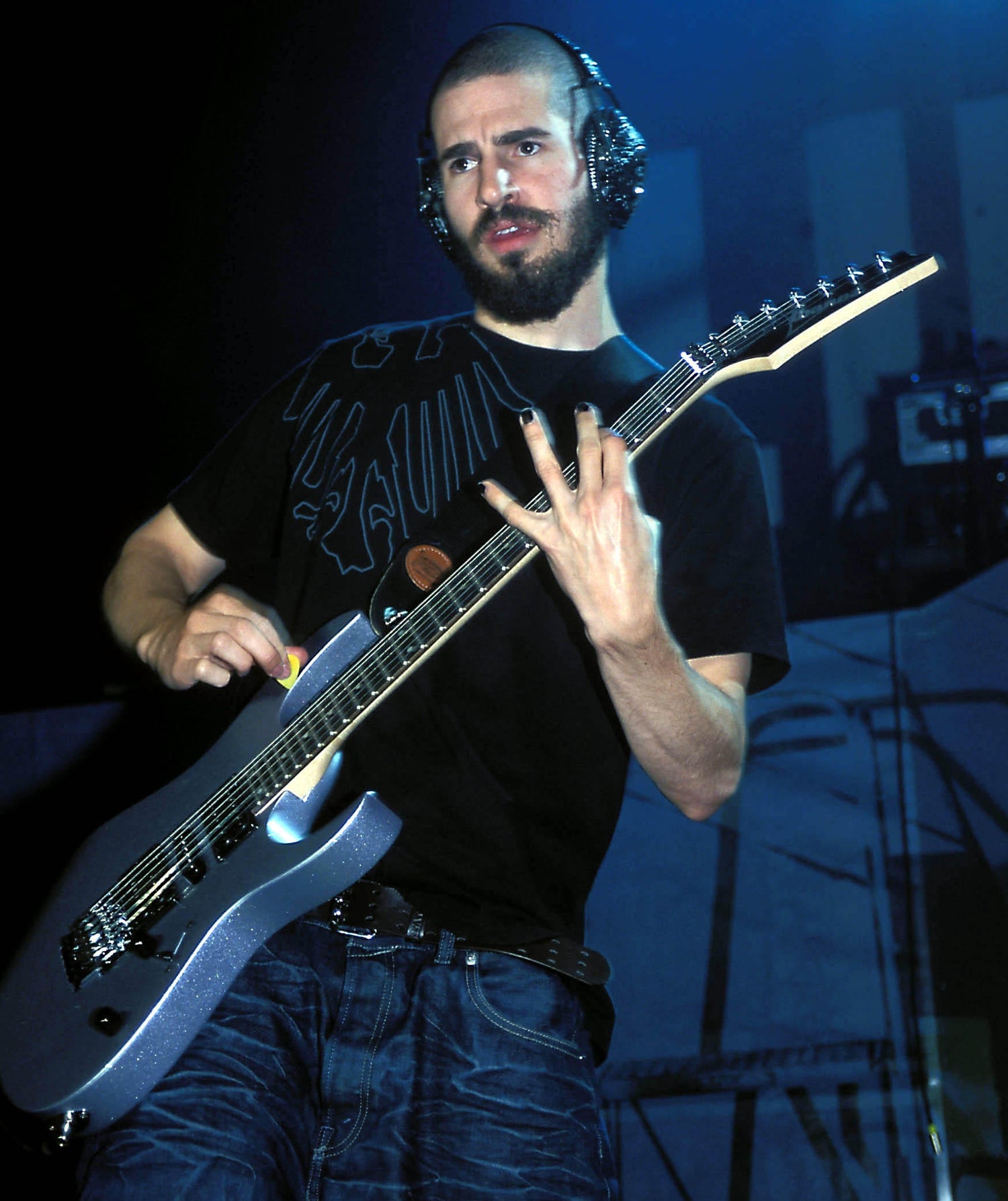
Brad Delson playing his Ibanez RG470XL Black Pearl guitar.
Guitars used on Meteora: Delson's number one guitar for Meteora was his Black Cherry PRS Custom 24 featuring a Hybrid Theory Dragonfly/Soldier graphic with a "Gas Mask" headstock logo. Other electric and acoustic guitars used for recording and touring included a PRS STD 24 Platinum/Silver, PRS CST 24 Violin Amber, Taylor 814ce (Natural), PRS CST 24 Sapphire Smokeburst, Ibanez RGT3120 (Trans Brown), Ibanez RG470XL (Black Pearl), PRS CST 24 #2 Soldier graphic with an arrow inlay, PRS STD 24 Black (smashed in 2004), and PRS CST 24 Transparent Ruby Artist Edition.
Amps used on Meteora: Clearly visible in the NRG studio's control room in the "making of Meteora" album insert, Delson used both a 100 Watt vintage Marshall Plexi panel head and a contemporary Orange TH100 head. Although not seen on camera, Mesa/Boogie Rectifier heads were also used, contributing significantly to the distinct NU-Metal sound heard throughout Meteora. In combination with a PRS guitar, the Mesa Rectifier head's unique tone played a pivotal role in creating the album's overall sound.
His relatively clean Marshall Plexi seems to be Delson's secret weapon, which was likely used along with the Orange amps to add some British-style mids and enhance the definition of the scooped American-style Mesa tone. Although there is no definitive proof of Delson recording this way, it is extremely likely.

Effects: While the Mesa Rectifier was the main source of distortion, Delson utilized a compressor (Boss CS-3) and a clean boost pedal (Zevex "Super Hard On") for additional power. (A Zevex "Super Hard On" can be seen in pictures of the Meteora control room.)
Speaker Cabs: Just like with Farrell's bass guitar setup, the speaker cabs were isolated in the live room while Delson tracked in the control room. The layout consists of one Marshall 4x12 cabinet loaded with G75 Celestion speakers and one Mesa Boogie 4x12 cabinet loaded with Celestion Vintage 30 speakers.
Meteora did not disappoint, shooting straight up to number one on Billboard's top 200 on the first day of release (March 25th, 2003), selling an incredible 800,000 copies in its first week, and going gold in just five days.
As of today, Meteora is ranked as the 36th best-selling album of the decade. With the success of both Hybrid Theory and Meteora, Linkin Park set the benchmark for Nu-Metal.
Studio Notes
Shinoda's responsibilities on Meteora included song arrangements, most of the music composition, and all of the lyrical content on "Breaking the Habit". In addition to playing keyboards, Shinoda also played guitar and bass. While he is primarily known for his vocals, his influence can be heard in every note on the album.
-

Alto Music Holiday Gift Guide 2025
The Holidays Are Here — and So Are the Best Deals of the Year The holiday season can get hectic—but there’s no need to let the “holiday crunch” become overwhelming. At...
Alto Music Holiday Gift Guide 2025
The Holidays Are Here — and So Are the Best Deals of the Year The holiday season can get hectic—but there’s no need to let the “holiday crunch” become overwhelming. At...
-

Blast From the Past: 50 Years of "Wish You Were...
With industry success to back it up, many Pink Floyd fans consider "Dark Side of the Moon" the "greatest album" ever made. With the same breath, the fans (and the...
Blast From the Past: 50 Years of "Wish You Were...
With industry success to back it up, many Pink Floyd fans consider "Dark Side of the Moon" the "greatest album" ever made. With the same breath, the fans (and the...



